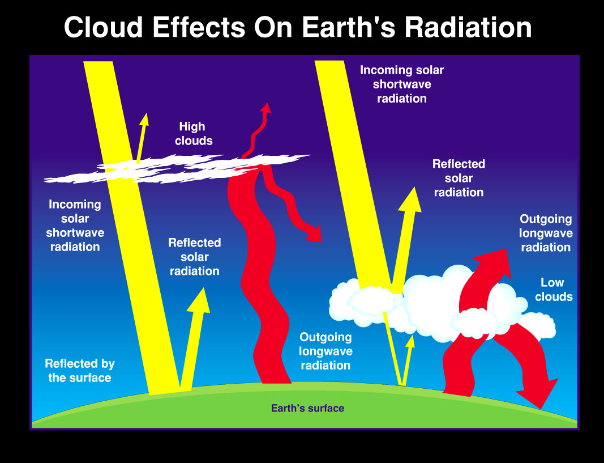NASA GLOBE Cloud Protocol - Clouds Protocol
NASA GLOBE Clouds: How You Can Help
GLOBE members' cloud observations are an important part of the Earth system puzzle NASA is actively building. Clouds can change rapidly, and different types of clouds have different effects on local climates. While lower cumulus clouds tend to have a cooling effect on the Earth, cirrus clouds higher in the atmosphere warm the planet by reflecting more outgoing radiation back towards the ground.
It is tricky to capture the extent of these interactions with satellites alone. That is why it is so crucial for researchers to have ground truth data gathered from the Earth's surface. That makes GLOBE members' observations very important because they provide scientists with a fuller perspective on how cloud cover affects our climate. Additionally, when members submit frequent measurements over time, their data provides NASA with greater detail on how the climate is changing.
After members submit their observations, the NASA GLOBE Clouds team at NASA Langley Research Center compares their measurements with satellite data to determine key areas for further investigation. The results of these investigations are then sent to members by email. This process allows more people to contribute to authentic scientific research and engage in active NASA missions.
Learn more about how to participate in the NASA GLOBE Cloud Protocol.
How Clouds Affect Our World
While the satellites deployed by NASA and worldwide space agencies provide a big picture of climatic cloud effects, they struggle at times to provide a detailed analysis of what is happening in specific locations. For example, it can be challenging to determine how cloud cover is affecting local weather patterns, or whether a particular area is receiving more or less precipitation over time. To better understand how particular clouds interact with solar radiation, see the infographic below.
For a more comprehensive explanation on cloud climate science, review the NASA Clouds and the Earth’s Radiant Energy System (CERES) brochure (pdf).






